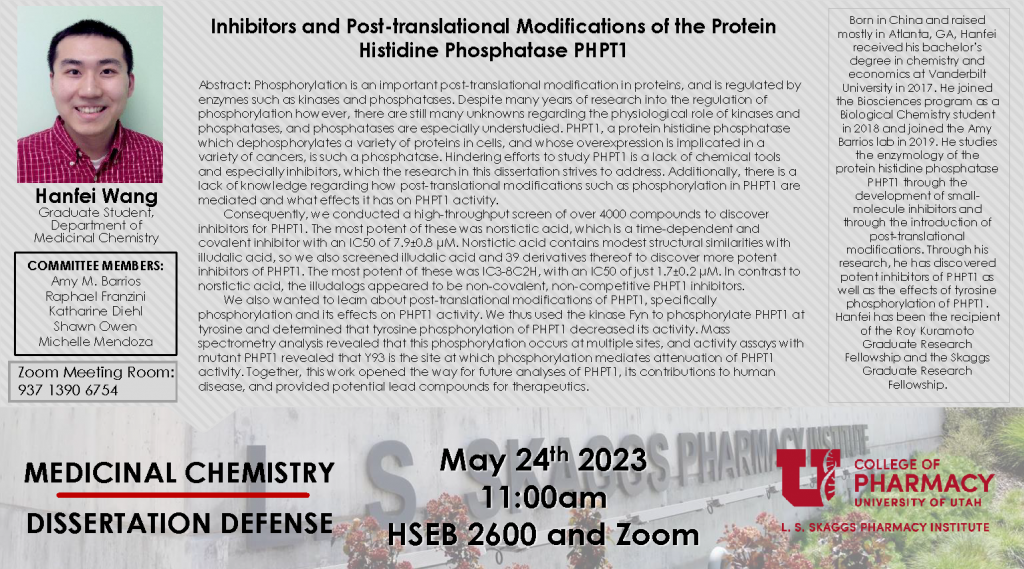Wednesday, May 24th College Seminar Series: Hanfei Wang

Please find the attached seminar flyer for Hanfei Wang
Inhibitors and Post-translational Modifications of the Protein Histidine Phosphatase PHPT1
Abstract: Phosphorylation is an important post-translational modification in proteins, and is regulated by enzymes such as kinases and phosphatases. Despite many years of research into the regulation of phosphorylation however, there are still many unknowns regarding the physiological role of kinases and phosphatases, and phosphatases are especially understudied. PHPT1, a protein histidine phosphatase which dephosphorylates a variety of proteins in cells, and whose overexpression is implicated in a variety of cancers, is such a phosphatase. Hindering efforts to study PHPT1 is a lack of chemical tools and especially inhibitors, which the research in this dissertation strives to address. Additionally, there is a lack of knowledge regarding how post-translational modifications such as phosphorylation in PHPT1 are mediated and what effects it has on PHPT1 activity. Consequently, we conducted a high-throughput screen of over 4000 compounds to discover inhibitors for PHPT1. The most potent of these was norstictic acid, which is a time-dependent and covalent inhibitor with an IC50 of 7.9±0.8 µM. Norstictic acid contains modest structural similarities with illudalic acid, so we also screened illudalic acid and 39 derivatives thereof to discover more potent inhibitors of PHPT1. The most potent of these was IC3-8C2H, with an IC50 of just 1.7±0.2 µM. In contrast to norstictic acid, the illudalogs appeared to be non-covalent, non-competitive PHPT1 inhibitors. We also wanted to learn about post-translational modifications of PHPT1, specifically phosphorylation and its effects on PHPT1 activity. We thus used the kinase Fyn to phosphorylate PHPT1 at tyrosine and determined that tyrosine phosphorylation of PHPT1 decreased its activity. Mass spectrometry analysis revealed that this phosphorylation occurs at multiple sites, and activity assays with mutant PHPT1 revealed that Y93 is the site at which phosphorylation mediates attenuation of PHPT1 activity. Together, this work opened the way for future analyses of PHPT1, its contributions to human disease, and provided potential lead compounds for therapeutics.
Wednesday, May, 24th
11:00 AM
HSEB 2600
Join Zoom Meeting
https://utah.zoom.us/j/93713906754
Meeting ID: 937 1390 6754
Thanks!
Published in All College of Pharmacy, Seminars